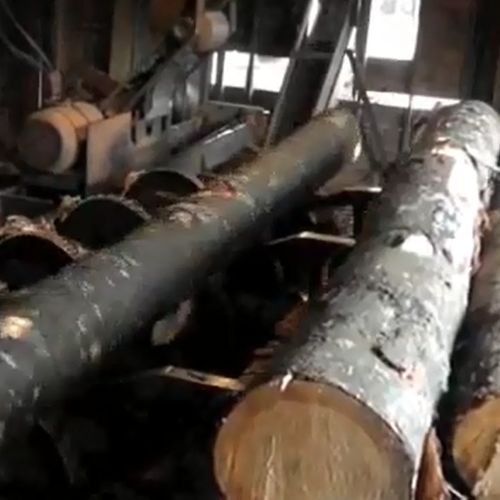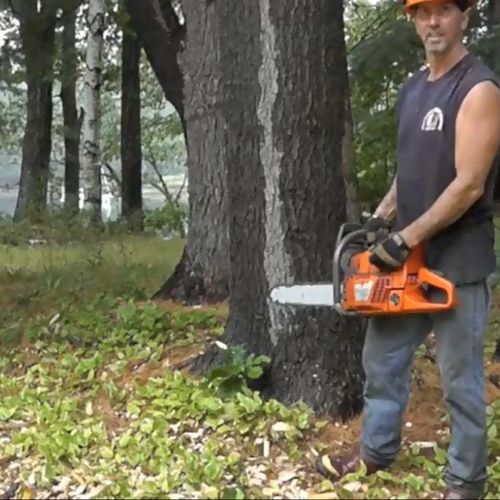
I picked up my weekly box of locally grown organic food today — not exactly a farm co-op, commonly knows as a CSA, but a small, farm-based business that distributes these fine products to individuals and restaurants in the region. I’ve been doing this for a few weeks, and it is interesting that what’s in the box — the contents of which are unknown to me until I open it — dictates my diet now, rather than what looks good to me in the market. Right now cabbage, root vegetables, and lettuce are in season, so I’m eating more of those. I also got some nice strawberries and some peppers. I never ate last week’s peppers, so I am currently on overload. Maybe it’s time for chile rellenos.
The quality is excellent, and the price, while not as cheap as the supermarket, is less than Whole Foods, and I feel good that I am supporting local businesses.
Why do we buy wood from across the country when it is available around the corner?
This concept of buying local got me thinking about the national and global industries that I have been railing about recently. From cheap Chinese and Korean electronics and tools to framing lumber shipped from the Pacific Northwest to the Southeast, we are addicted to getting the lowest-priced product, no matter how far it travels to get to us.
The standard framing lumber used in the southeast is spruce/pine/fir, logged and milled in the western U.S. and Canada. It’s inexpensive, easy to work, and readily available, and contractors rarely think twice about how far it travels to their job sites. I live awfully close to what an old bluegrass song refers to as “Georgia Piney Woods,” but rarely do I see any local wood used for studs in buildings around here.
Low price/long distance is not a good long-term strategy
Up until a few decades ago, this very lumber was used almost exclusively in home construction, and those homes have held up very well over time. What market forces have caused this change, and is it for the better? It could be the fact that local yellow pine is harder and more prone to warping than the western white woods. It is certainly tougher to work with, and in our do-it-fast, do-it-cheap world, this is an inconvenience by which we simply cannot abide.
Like buying local food when it is available and in season, we should work to change our behavior and use the perfectly suitable lumber that is harvested practically in our backyards instead of shipping truckloads of it thousands of miles across the country. We may have to work a little harder, but, like eating locally grown, in-season foods instead of exactly-what-I-want-when-I-want it, using local products and reducing our global impact in the process might just be better for us.
Weekly Newsletter
Get building science and energy efficiency advice, plus special offers, in your inbox.















8 Comments
Local Wood?
Carl- Southern Yellow Pine is regionally available in the southeast, and in the northeast most of our SPF (especially in narrows) comes from maine, NH, vermont, and southeastern canada. I agree that regional sourcing is a no brainer.
SYP
I know that SYP is available in the south, my point is that it is not used for much anymore. Studs are mostly SPF from the northwest, joists are mostly TJIs or Trusses. We have this great supply of lumber that does not see much use.
Locally cut?
What about milling wood from the site as it is cleared for construction? It is so odd to see a pile of wood destined for a burn pile on the side of a lot and a bunch of lumber being trucked inl
Response to Ethan T
Ethan,
It's fairly common in Vermont to use a portable bandsaw mill to mill the trees that are felled to clear the site. There are a few disadvantages to using green lumber for framing, but it's quite possible. I've done it.
-- Martin Holladay
Options
There are a lot of options:
1) Hire a portable bandsaw mill operator to come saw the lumber on site, and either build with it green or stack it to air dry before use (ideally for a year or so).
2) If you live near a small sawmill, get the logs from the site trucked to the sawmill, sawed, and perhaps kiln dried before they are trucked back.
3) Buy ready-milled or custom-milled wood directly from a local saw mill.
4) Buy regionally produced wood from a lumberyard that includes that in their offerings.
Being lucky enough to live an area that includes all of those options, I've done all of them, and even sawed some logs up myself with a chainsaw mill. With milling lumber from the site, it's a bit of a challenge to plan the quantities and sizes of lumber needed and figure out how to best use the available logs for that, and the timing can also be a challenge if you want to build with dry lumber. It's also important to keep in mind that if you want wood for trim or floors or the like, the labor involved in final milling can be a lot more than the labor involved in sawing, particularly if the equipment available is marginal for the job. But having visible trim or floors that came from trees on site can be a nice touch.
All in all, I think option 3), buying from a local sawmill, is often the best option, as the cost savings can be real, the quality can be high, and you avoid the challenges associated with trying to match the available logs to the needs of the project in time, dimensions and species. But if you have logs from the site that can be made into good lumber, by all means, do something with them: get them sawed on site, and dry them to use in a future project, or sell the logs to a local sawmill even if you get next to nothing for them. And if you are willing to take on the complexities and costs of building with the site-milled lumber, it can be very satisfying.
Lumber grading
There can be a couple of complexities to using site-cut wood:
Our codes require all lumber used in construction to be graded. Often you can get a grader to come to your site and approve it, but that can cost more than the difference in buying from a yard.
Lumber with sizes outside those listed in our building code require an engineer's approval - even if they exceed the size of the dimensional lumber from the code tables they are to replace.
Hi All,
Jumping into this thread to see if it's still active...
How feasible would it be to use small-diameter pine (say, 8-12" DBH) from thinning projects and mill it into lumber for small-scale home repair projects?
I live in the Western US, where we have immense landscapes covered with overstocked, small diameter pine that needs to be thinned to reduce catastrophic wildfire risk. Large-scale thinning projects either pile and burn, chip, shred-and-spread, or ship off the logs for bio-fuel etc. But in the spirit of "Local Wood" ethos, it seems like a person willing to put in the sweat equity could use a portable mill to mill those smaller-diameter trees into lumber suitable for framing or other home construction (2x4 for framing, deck wood, DIY floorboards, etc.). With the price of lumber so high, it may be a good way to use wood that's suitable for construction but not large enough for commercial milling.
Being a "total greenhorn" though, am I dreaming? What's the minimum diameter log that could be milled into a 2x4 suitable for framing, for instance? And at what point does the cost and effort become too high for the yield of lumber from thinned trees?
It's great to see your enthusiasm for supporting local businesses and embracing the concept of "local food, local wood." Just like you're enjoying the benefits of locally grown organic food, using lumber from local sawmills for home construction makes a lot of sense. It not only supports the community but also reduces the environmental impact associated with long-distance transportation.
And speaking of sustainable choices, if you're interested in incorporating more natural and sustainable products into your life, you might want to explore naturally food https://www.znaturalfoods.com/ . They offer a wide range of natural foods and ingredients that align with a conscious and eco-friendly lifestyle.
Log in or create an account to post a comment.
Sign up Log in